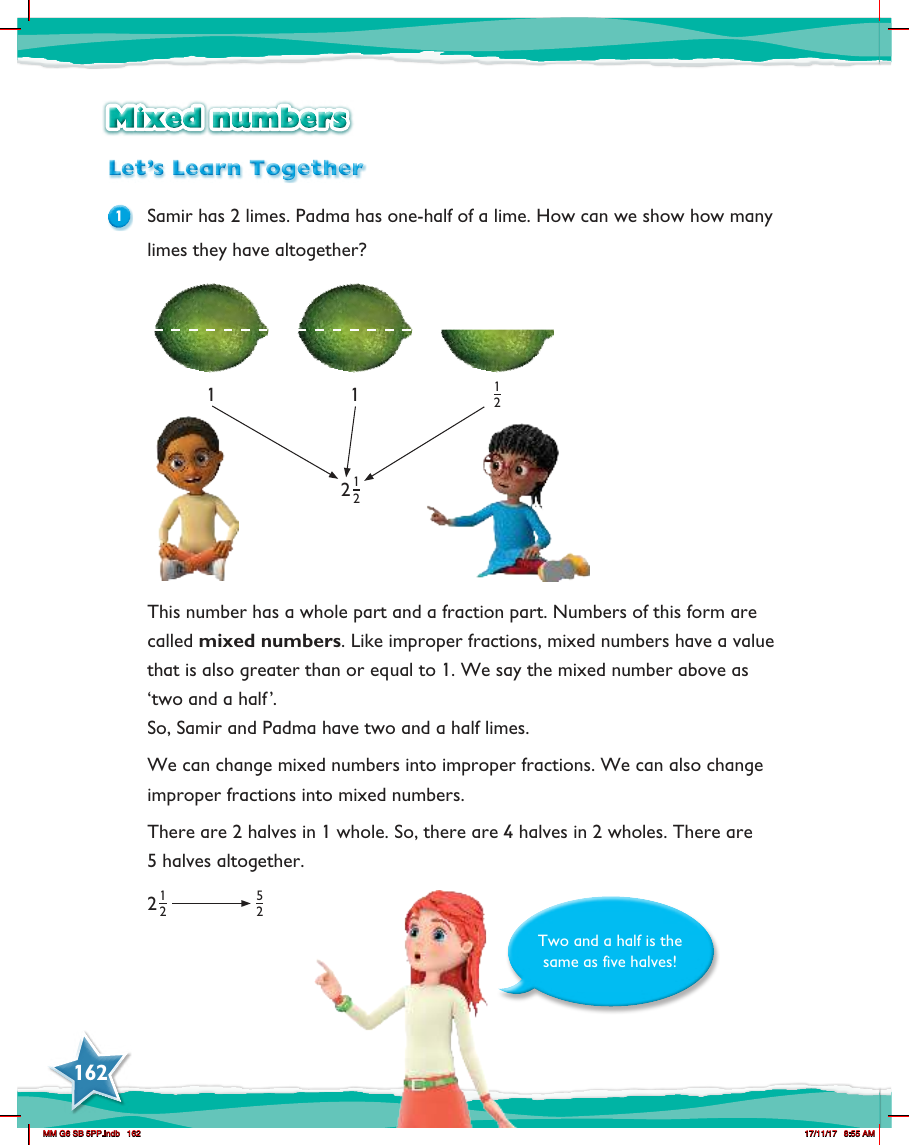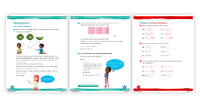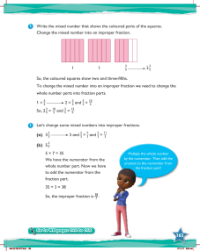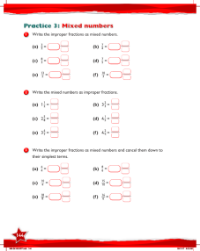Max Maths, Year 6, Learn together, Mixed numbers (1)

Maths Resource Description
In a Year 6 mathematics lesson, students are introduced to the concept of mixed numbers through a practical example. Samir has 2 whole limes, and Padma has one-half of a lime. To determine the total number of limes they have together, the lesson illustrates how to combine whole numbers with fractions. The sum of their limes is represented as a mixed number, which consists of a whole part and a fraction part. The term 'mixed number' refers to any number that combines a whole number with a fractional part and is equal to or greater than 1. For instance, the total limes Samir and Padma have is expressed as 'two and a half'.
The lesson further explains the relationship between mixed numbers and improper fractions. An improper fraction is a fraction where the numerator is greater than or equal to the denominator. Students learn that mixed numbers can be converted into improper fractions and vice versa. In the case of Samir and Padma's limes, 'two and a half' can be transformed into an improper fraction. Since there are 2 halves in 1 whole, 2 wholes would contain 4 halves, and adding the half from Padma gives a total of 5 halves. Therefore, 'two and a half' is equivalent to the improper fraction five halves, demonstrating the interchangeable nature of these two numerical representations.


